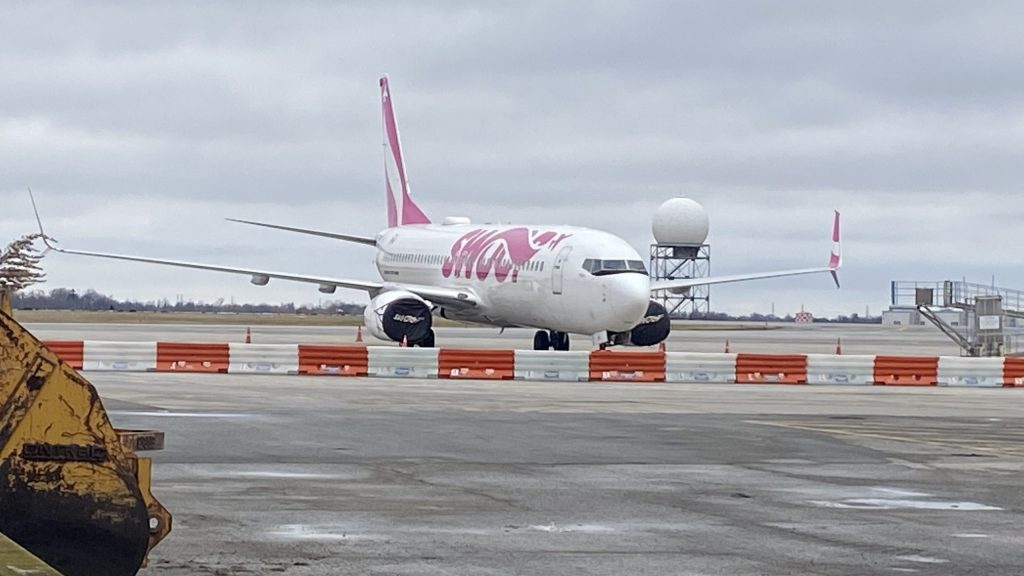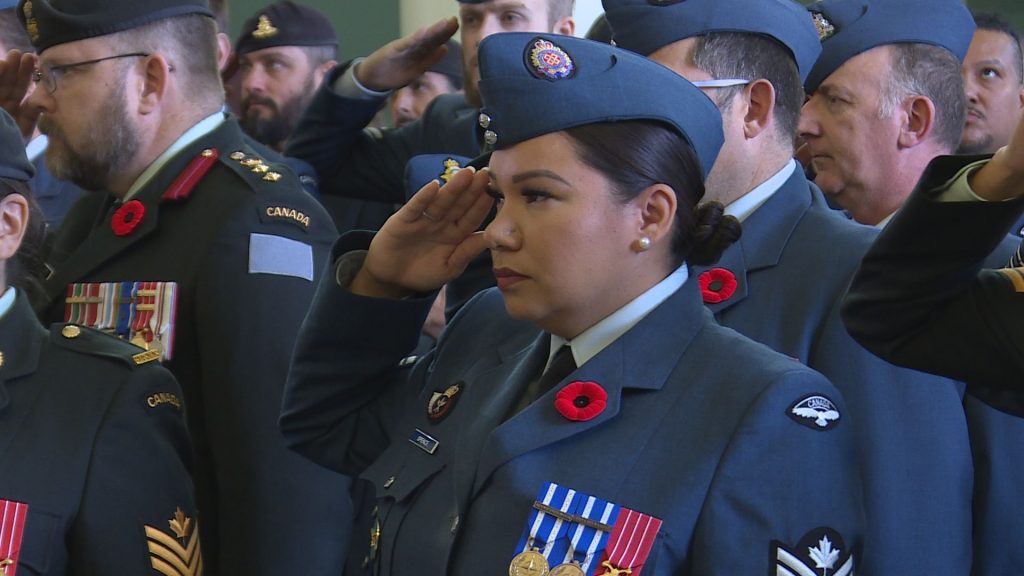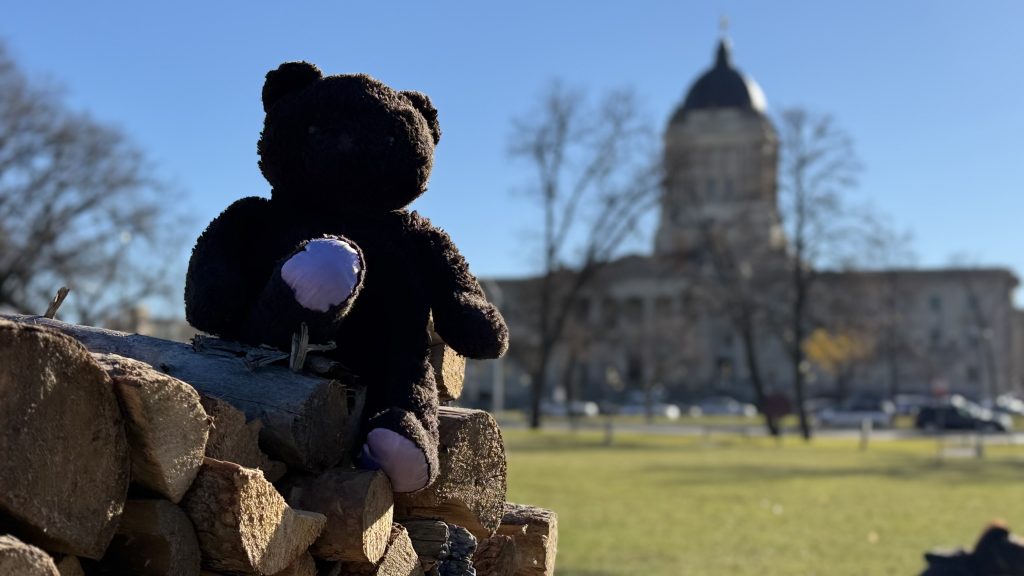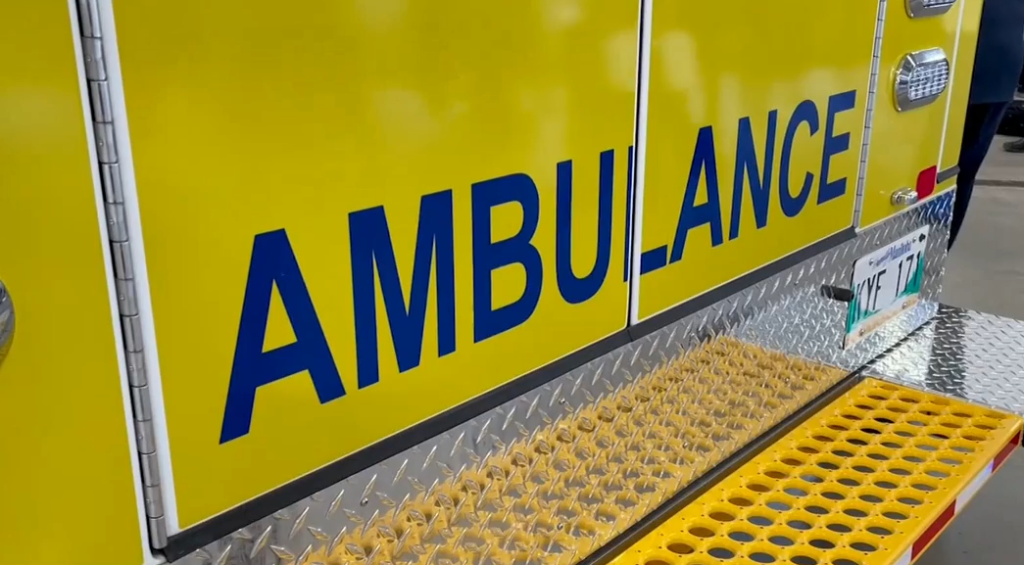Lack of budget airlines, government fees keeping Canadian airfares high

Posted January 23, 2023 12:00 pm.
Last Updated January 24, 2023 12:50 pm.
The lack of budget airlines and government restrictions are keeping domestic airfares high in Canada, according to experts.
Co-founder of Flytrippers Andrew D’Amours tells CityNews studies have shown that out of all developed countries, Canada has the worst airfares.
It’s become slightly better with three new low-budget airlines recently entering the market, driving prices down, but the country is still far behind the U.S. and European markets.
Flair Airlines, Swoop Airlines and the newly launched Lynx Air are all considered low-cost airlines. “This type of airline is a really big part of making booking flights affordable,” said D’Amours.
“When Flair launched from Montreal to Vancouver, this was a very popular route that was routinely around $500 … And when these [low-cost] airlines launch the same route, then Air Canada lowers their prices, even though you know the cost of operating the flight hasn’t gone down.”
Flair Airlines currently operates with 19 aircraft and offers flights in Canada, the U.S. and Mexico.
Chief Commercial Officer Garth Lund tells CityNews they operate with a very simple model that allows them to offer those lower costs.
“We fly brand new aircrafts which are the most fuel efficient, reducing our fuel cost. We operate with a single class all economy product, which means by having more people on the plane, we can lower the unit costs that way,” explained Lund. “As much as possible, we operate to lower-cost airports, like Abbotsford or Kitchener-Waterloo where the airport fees are much lower.”
Lund said he hopes what has happened globally with a reduction in air fares over the last few decades with the arrival of low-cost carriers into the market can happen in Canada.
“Traditional legacy airlines typically have had to adapt and they need to be able to compete as well with the low-cost airlines. So, I think having new carriers in the market, which can bring that kind of a model is a very good thing for Canada,” he said.
However, the competition for the two main Canadian airlines, Air Canada and WestJet, is still very limited compared to places like the U.S.
“They have so many airlines, so every single direct route is served by multiple airlines, which lowers prices,” added D’Amours.
RELATED: Canadian airlines come in at low end of on-time performance: analytics firm
Kareem Alleyne, who is from Montreal but lived in Vancouver up until recently, said the high cost of air travel prevented him from returning home to see his family as often as he would’ve liked.
Alleyne said he has paid upwards of $900 for a roundtrip flight. “With the prices, it made it a little bit challenging, so I would try to come back three to four times a year. Obviously, [I was] looking at the prices accordingly and seeing what works in my budget at the time. There were times where it was cheaper. Other times, they just didn’t even make sense to do it.”
Alleyne tells CityNews he always tries to find the cheapest option.
“I usually use the discounted websites because there’s no way I’m paying those regular prices from the actual airlines’ website, they’re just ridiculously expensive.”
D’Amours said there are two main reasons why airfares are remained so high in Canada compared to other developed countries and both have to do with the federal government.
In Canada, airports have to pay rent to the federal government, a percentage of each airport authority’s gross revenue, which is not the case in many other countries. “So, they have to pass on those fees to airlines [and they] pass them along to passenger,” explained D’Amours.
The National Airlines Council of Canada (NACC) confirmed these details saying the costs of services that airlines absorb, including airport rent, air travellers security charge, NAV Canada fees and federal taxes all play a role in why costs so high.
The NACC, which represents Canada’s largest air carriers, said the air transport system provided Ottawa with over $400 million per year in revenue prior to the pandemic.
According to the Greater Toronto Airports Authority (GTAA), Canadian airports have paid more than $6 billion in rent since the 1990s. Pearson Airport paid $170 million in 2019, the last year before the COVID-19 pandemic.
GTAA said they recently joined other members of the NACC who are calling for the government to reinvest these rents into airport infrastructure in order to “maintain reasonable user fees, meet passenger needs and make aviation more sustainable.”
Aéroports de Montréal (ADM) said they paid $83.1 million to Transport Canada in rent and transfer to governments for the first nine months of 2022, representing 18 per cent of their total revenue.
For the entire 2021, their taxes and rent were $63.2 million, 23 per cent of ADM’s total revenue. Vancouver Airport Authority paid $21.39 million in 2021, but paid over $60 million in 2019.
Transport Canada said the economic framework for the air section is based on the user-pay principle. “This means the passenger ultimately pays the costs for the service they receive, with little to no taxpayer financial support. It includes the costs of services that airlines require to deliver their services, such as those of airports, NAV CANADA and the Canadian Air Transport Security Authority,” read a statement.
They say the rent prices airports pay to the government are negotiated between the operators and the government and is based on revenues.
In the United States, airports are municipally run, and airport infrastructure is funded by the federal treasury. “There, taxpayers subsidize airports. Here, airports subsidize the federal treasury,” according to the GTAA.
Another issue, D’Amours said, is the government also has a 49 per cent cap on how much an airline can be owned by foreign investors.
“That limits the ability of the airlines of actually accessing capital to grow to start an airline,” D’Amours explained. “This is really kind of presents another obstacle for airlines based in Canada, because they can’t get capital from outside of Canada.”
The cap on international ownership used to be just 25 per cent, but was increased in 2018.
“The Government of Canada expects this to bring more competition into the Canadian air sector, more choice for Canadians, greater connectivity in underserved regions, and benefits for airports and suppliers, including the creation of new jobs,” read the governments release at the time.
Recently, Flair Airlines even went through a review of their ownership structure to conclude that it was in fact controlled and owned by Canadians. The airline had to show Transport Canada it was compliant with these regulations.
RELATED: Ontario’s tourism sector won’t fully recover from pandemic until 2025: report
These high air fares have also contributed to Canadians deciding whether to travel within their home country or abroad, affecting tourism, an industry that has suffered during the COVID-19 pandemic.
“For the same price as going west in my own country, I could go to Europe. Why would I go out west, right?” said D’Amours. “So that’s definitely not good for domestic travel. If you want to encourage buying local, traveling local, discovering and roaming the country, it’s definitely a big obstacle.”
Alleyne added he would definitely be more open to exploring parts of Canada he hasn’t seen if it weren’t for the cost of flights.
“Is it worth $1,000 to go to Winnipeg? I don’t know so after a while, it definitely deters you,” said Alleyne. “I’m not going to pay that much to go to these places, especially when you can pay $1,000 to go to the Caribbean or go to Mexico or go to Paris.”
“It’s unexplored by a large portion of the population because it’s just too costly,” shared Alleyne.








